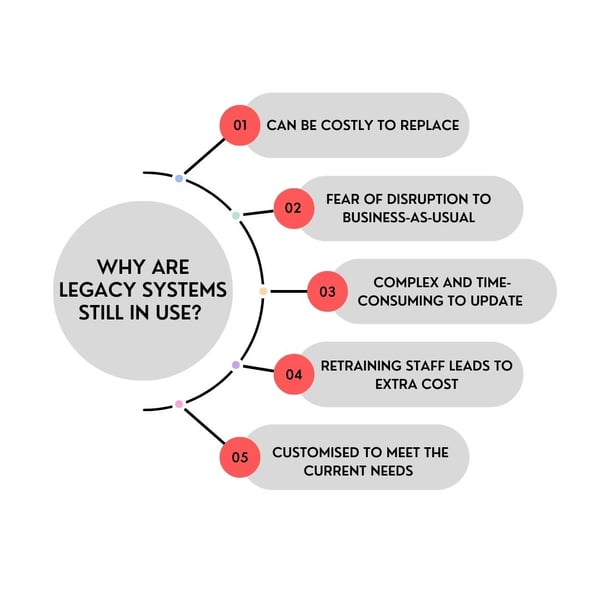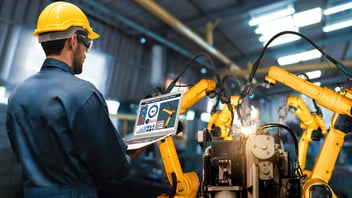Ready to Modernize your Safety? Legacy Vs Modern Solutions
An in-depth look at why legacy solutions are still in use and what modernizing can achieve!
Saudi Arabia is currently the highest government spender on technology in the world. Despite this rise of the digital economy in Saudi Arabia many organizations are still operating and relying on older or outdated digital systems. The use of outdated systems, especially in safety technology used in industries, in today’s digital age poses a great threat to the safety of your team and organization.
Safety management systems (SMS) are experiencing modernization at a fast pace with the integration of data analytics, artificial intelligence (AI), and the Internet of Things (IoT). Yet safety professionals and managers fail to realize and reap the benefits of modern digital systems.
But when do we really know the safety management system currently in use in industrial safety needs an overhaul or an upgrade? The classification of systems into legacy or modern help us determine where our systems currently stand. In this article we will delve into understanding what a legacy system is, demystifying popular beliefs, and if modernizing your legacy safety system is worth the step.
Legacy and Modern Systems
A legacy system is outdated computing software and/or hardware that is still in use. Although it still serves the purpose it was initially designed for, it cannot accommodate any future growth and cannot interact with newer systems due to its older technology. For example, paper-based safety records and Microsoft Windows 7 operating systems are commonly used legacy systems in use. Microsoft Windows 7 became a legacy operating system back in 2020.
A modern system is a computer system or software that is designed using the latest technology and is more advanced, efficient, and user-friendly compared to a legacy system. Unlike legacy systems, modern systems are designed to be flexible, adaptable, and scalable, making them better suited to meet changing industrial safety needs and requirements.
Why are Legacy Systems still in use?
Safety professionals all over Saudi Arabia are still using legacy systems due to internal resistance, lack of technical expertise, and fear of the cost of the initial investment. Some more points as to reasons that safety professionals may still use legacy systems are illustrated in the infographic below:

Modern Safety Management Digital solutions answer most if not all of the concerns that are listed above. Initial investment rates in digital solutions are at an all-time-low with no capex required.
The direct integration with older hardware causes minimum disruption to businesses. Onboarding managers are offered by tech companies to offer their clients technical assistance throughout the migration processes.
Mitigating Risks with Modern Systems
Legacy systems may still be useful and comfortable to use but pose great risks to a company’s safety systems and modernizing the system you can mitigate these risks. We will look at each of these risks and how a modern system eliminates them.
- Data Security
Booming digital economies in the Middle East have given rise to cyberattacks and ransomware attacks.Legacy systems are more prone to cyberattacks without the required encryptions and detection systems. Modern systems are designed with robust security features to protect against cybersecurity threats, including encryption, multi-factor authentication, and intrusion detection systems.
- System Reliability
Legacy systems may experience more downtime due to hardware failures or software glitches, leading to loss of productivity and revenue. Modern systems are designed with redundancy and failover capabilities to minimize system downtime. Cloud-based storage and operations are the norm in modern systems decreasing reliance on hardware systems.
- Regulatory Compliance
Compliance with modern regulations and standards may not be possible with legacy systems, making it difficult to maintain legal and regulatory compliance. Consequently, older systems may face increased risk of operational disruptions and financial penalties due to non-compliance. Modern systems are designed to comply with modern regulations and standards, making it easier for organizations to maintain legal and regulatory compliance.
- Support
Difficulty in finding technical support or replacement parts leads to longer downtime and higher costs for repairs in legacy systems. Modern systems are typically supported by the vendor or a third-party support team, ensuring that technical support and replacement parts are readily available.
Modern systems are typically characterized by their ability to integrate with other systems, operate in the cloud, use artificial intelligence and machine learning, and provide real-time analytics and insights. They are built with security in mind, making them less vulnerable to cyber threats, and are easier to maintain and update due to their modular and component-based design.
Overall, modern systems provide a more intuitive and streamlined user experience, are more cost-effective to operate and maintain, and provide better performance and scalability compared to legacy systems. We have several case studies on our website of successful modernizations of legacy systems, that give real-life examples of how a modern system has enhanced security, compliance, increased efficiency in operations, and most importantly safety.


